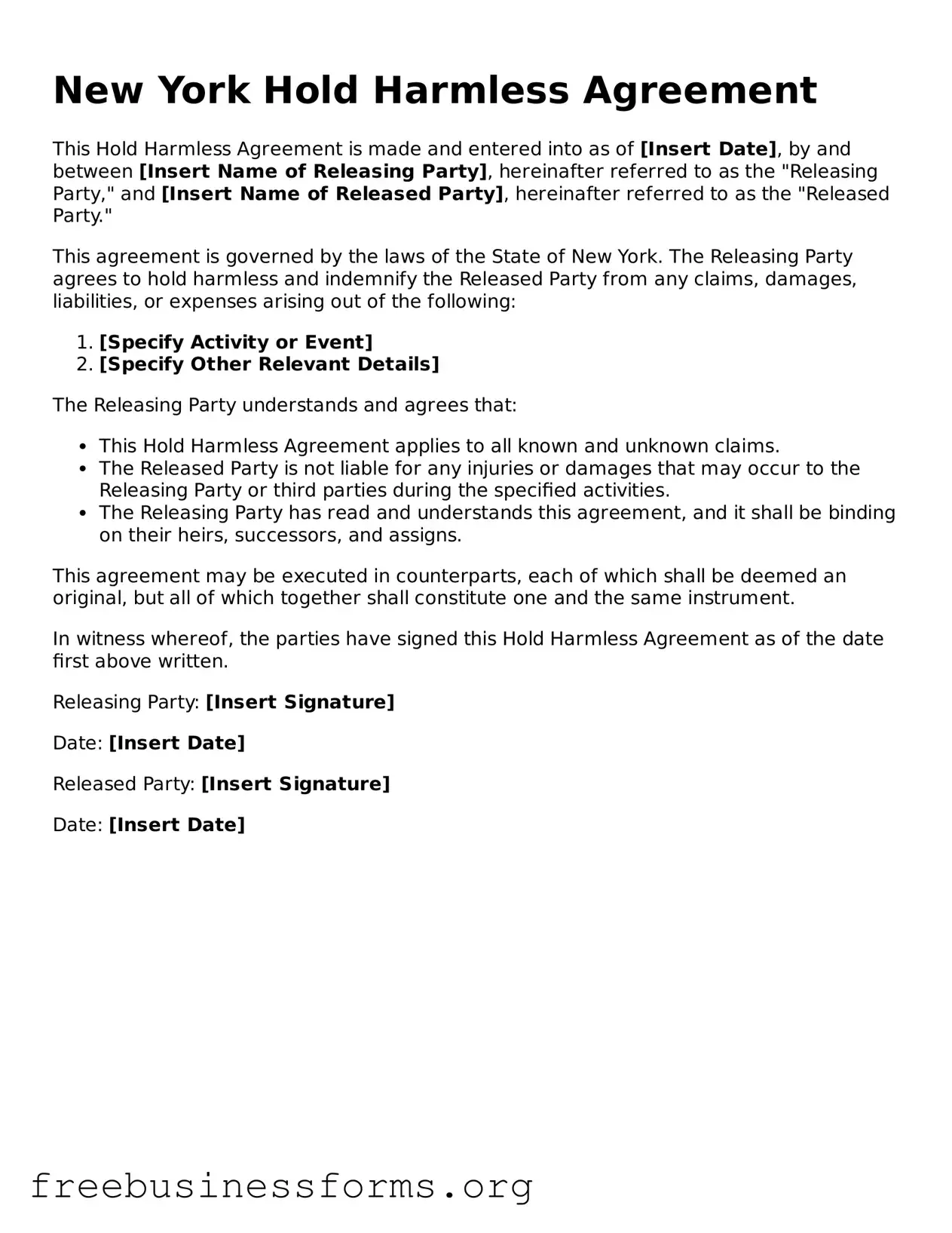New York Hold Harmless Agreement
This Hold Harmless Agreement is made and entered into as of [Insert Date], by and between [Insert Name of Releasing Party], hereinafter referred to as the "Releasing Party," and [Insert Name of Released Party], hereinafter referred to as the "Released Party."
This agreement is governed by the laws of the State of New York. The Releasing Party agrees to hold harmless and indemnify the Released Party from any claims, damages, liabilities, or expenses arising out of the following:
- [Specify Activity or Event]
- [Specify Other Relevant Details]
The Releasing Party understands and agrees that:
- This Hold Harmless Agreement applies to all known and unknown claims.
- The Released Party is not liable for any injuries or damages that may occur to the Releasing Party or third parties during the specified activities.
- The Releasing Party has read and understands this agreement, and it shall be binding on their heirs, successors, and assigns.
This agreement may be executed in counterparts, each of which shall be deemed an original, but all of which together shall constitute one and the same instrument.
In witness whereof, the parties have signed this Hold Harmless Agreement as of the date first above written.
Releasing Party: [Insert Signature]
Date: [Insert Date]
Released Party: [Insert Signature]
Date: [Insert Date]
